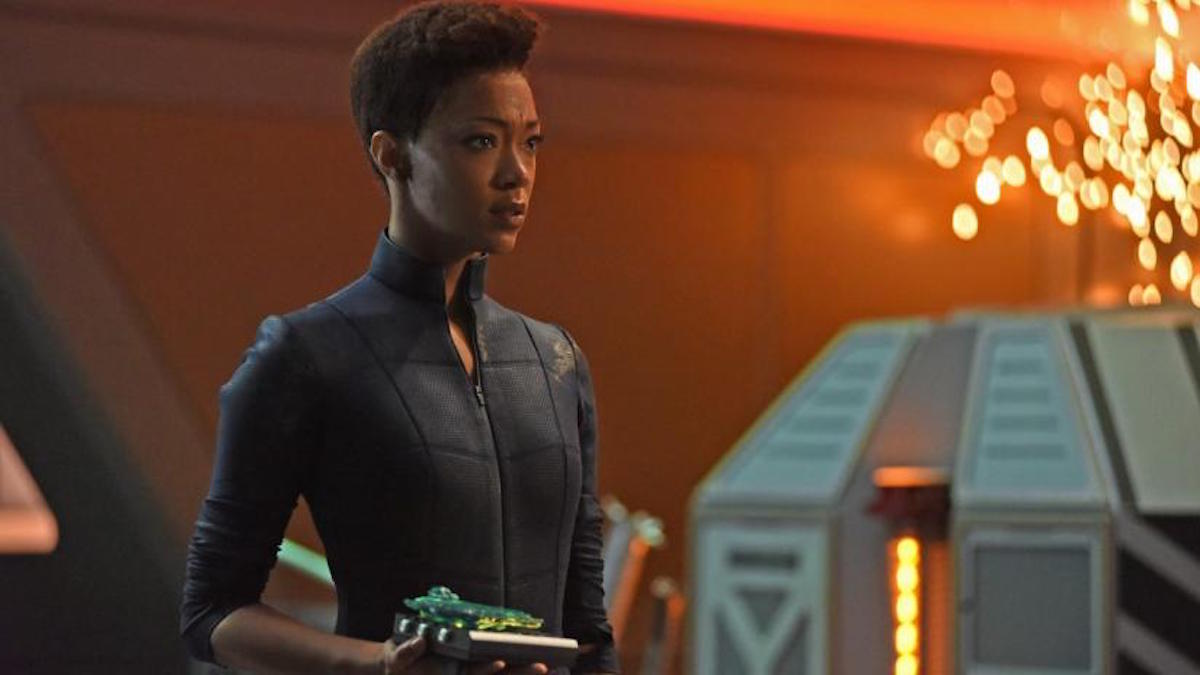We might have mixed feelings on Star Trek Discovery and that season two finale, but as the dust settles, it’s time to start thinking ahead to the future of the series and, indeed, the future of Star Trek TV.
Up until now, Discovery seems to be living in a place of nostalgia, with the character of Michael Burnham being Spock’s adopted sister and the Enterprise and her pre-Kirk crew featuring heavily in season two. The season two finale finally let go of the past and brought the show into the future, quite literally.
(Spoilers to follow)
The Discovery, crew and all, has been warped into the 33rd century, leaving Pike, Spock, and years worth of Trek history behind them and finally facing a new future. Given the complaints that the show was messing with the canon timeline by having Burnham be a lost sibling of Spock and seeming to be more technologically advanced than the Original Series, this is a smart move on their part; now the show can reach full potential without having to worry about whether or not it’s fitting in with the established timeline.
This series is set centuries after the end of Star Trek: Voyager. It’s set after the wormhole that destroyed Romulus and created the Kelvin timeline. It’s even set after the upcoming Picard-centric TV series that will be released on CBS All Access. This is the undiscovered country, a strange new world that has not been explored. The crew is boldly going where no Star Trek has really gone before, save a Star Trek: Short Trek episode set in this century.
It won’t be that the series has erased the other shows from memory. “There will be canonical references to everything that has happened in the various shows; we’re not erasing that,” said series showrunner Alex Kurtzman told The Hollywood Reporter. “But we’re so far past that point that all of that is a very distant memory. We’re very excited to see how you put the elements of Star Trek in an entirely new universe.”
We’re centuries past the Enterprise in any capacity now. We have no frame of reference really for what this universe might look like. Star Trek’s inherent optimism means that it’s unlikely that they’ll discover an apocalyptic situation; it would be too much grief to show the Federation crumbled and disorder dominating the universe. Centuries past war with the Klingons and the Romulans, could we see a universe at peace, and will the Discovery itself be a harbinger of war?
Another question that remains is how Georgiou (Michelle Yeoh) will fit into this unknown world. We’re getting a Section 31 spin-off with her in the lead, but she was seemingly on the Discovery when it jumped into the future. Will her show be set in the future, or in some unknown period of time between seasons one and two of Discovery?
Personally, I think this is a genius idea. By starting to set their bigger shows—Discovery, Picard, Section 31—in yet-unexplored time periods (post-Kelvin anomaly and 950 years into the future), the series isn’t tied to any set canon. They can explore the same themes that made Trek so beloved, without stepping on the toes of any previous series. Just as the series promises to boldly go where no one has gone before, these new live-action shows can boldly go as well.
While Discovery might be muddled at times, this is the smartest decision they could have made, and I await season three eagerly. Let’s see what the 33rd century looks like.
(image: CBS)
Want more stories like this? Become a subscriber and support the site!
—The Mary Sue has a strict comment policy that forbids, but is not limited to, personal insults toward anyone, hate speech, and trolling.—









Published: Apr 22, 2019 12:16 pm